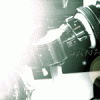-
Posts
107 -
Joined
-
Last visited
Everything posted by Marc Levy
-
On night shots, does anyone have a number of stops under key level they find effective for underexposure? I understand this varies with the situation. Also, on the blue thing, this is from left field, but blue feels cooler, as does the night's temperature.
-
Thanks.
-
If estimable, what percentage of the "final image" seen on screen is the result of printing versus exposure/development of the negative? Or, for scenes requiring "other-than-normal" looks (darker/lighter-than normal), does one usually try to nail the exposure (so that less manipulation in prinitng is required), or does one rely more on printing for the alterations? Thanks.
-
I've been hearing conflicting accounts on this topic: As most of the shoots I'm involved in at the student level will go straight to video, printing is not an option. With certain stocks, overexposing one stop and printing down one stop yields a "better" image (blacker blacks, higher contrast) then exposing at recommended ASA and printing normally. Is this effect possible with telecine? Can one "print down" with telecine? Also, should one expose differently (than if printing is an option) when telecine is the final step in the imaging chain?
-
I also admire Doyle's work. Check out these stills at: http://www.scoutgallery.com/doyle.html#
-
I agree, f/stops are more convenient - but they are problematic when dealing with lower light levels. Especially when the meter can't give an fstop below a certain point. So, if key-side reads f/2, and the fill side is 4 stops under, the meter won't respond. This is where FC's are appealing.
-
I agree, f/stops are more convenient - but they are problematic when dealing with lower light levels. Especially when the meter can't give an fstop below a certain point. So, if key-side reads f/2, and the fill side is 4 stops under, the meter won't respond. This is where FC's are appealing.
-
How about footcandles? Does anyone here meter using them? My professor's suggesting that using FC's instead of F/Stops is better, especially for figuring out ratios.
-
Congrats, David. That's awesome!
-
This topic is confusing to me. If we are framing both for t.v. overscan and theatrical projection, it seems as if there is a compromise in framing, which is an area that demands extreme precision. How does one frame with confidence?
-
Thanks. I was thinking the same.
-
I am shooting a scene that will end up having the "bleach-bypass" Avid plugin applied to it. I want desaturation (among other things) - but want to retain the almost metallic luster that bleach-bypass creates in the colors. O.K. My question is, should the color palette of the prod. design (wardrobe specifically) be desaturated, or would the desaturation in post make it too desaturated? More generally, when desaturation is the aim and bleach-bypass is done, should one desaturate the palette, or keep the colors vibrant and rely on the photochemical process to desaturate the image? Next question: I'm going for quite cool and high contrast in a beach, day exterior. In addition to the Avid bleach-bypass plugin, are there any recommendations on ways I should shoot it to get the negative closer to the desired look (filters, etc.)? Or, should I shoot it as clean as possible? Thanks, this is a long one.
-
Great stuff. Thanks.
-
In filmschool we learn loads about lighting Interior stuff, but nothing about Ext. Day. When shooting Ext. Day scenes, and when working all day on those scenes, how does one manage the shifts in the sun (at times from one side of the subject to the other)? Do you silk the entire shot so that there in no key, then create a key with a light or mirror? Must we always edgelight on the subject? What are some good ways to separate subject from BG? Also, what are some things I should keep in mind when shooting ext. day scenes? Any preferred techniques? Thanks.
-
Thanks for the feedback.
-
I checked the archives - not so much on this subject: I'm shooting a scene that is to appear lit just by candles. The director had me screen scenes from Artemisia, which use a single candle as motivation. Interestingly, there appears to be very little flicker (if any, other than what is created by the candle) in those scenes. What are some good units and techniques to create flicker, and is this flicker even necessary? I've seen many student films where the flicker is overdone. (Note: This scene isn't two people lit by a candle between them, but rather a few candles surrounding a subject - romantic, not horrific). Any ideas?
-
Thanks. Very useful information.
-
Thanks. I'll definitely consider the 82 series. I'm really looking for a dramatic cooling effect.
-
I am trying to achieve an overall cooling effect in some upcoming exterior day scenes. I'm considering shooting Tungsten-balanced film (uncorrected) in daylight. Anyone familiar with this effect? If so, do you recommend, or is it too blue? Thanks.
-
Thanks, I'll look into that.
-
Does anyone make a 16mm infrared b/w film? If so, what equipment and production concerns (incl. post) relate to infrared ? Is it a reality for a low-budget? Thanks
-
Happy Together - Wow!!! This is bold cinematography. I love how Doyle uses nearby practicals to motivate a blown-out key on the actor's faces. This cinematography is inspirational - anyone know any of the tricks of that film?
-
Does the maglight read as white with a tungsten-balanced film, or is it a bit warm?



